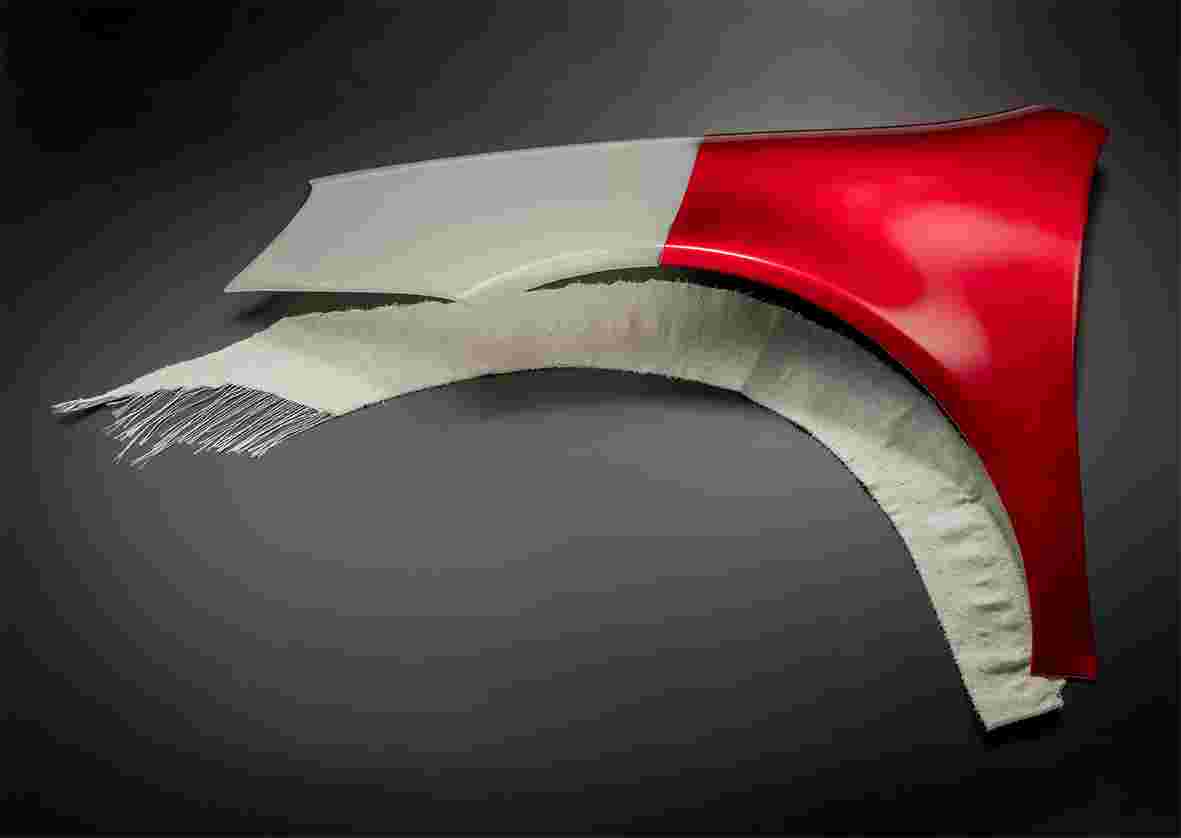 Shima Seiki Mfg., Ltd. will exhibit at JEC World 2020 from March 3rd to 5th in Paris. (Hall 6, Booth P28)
Shima Seiki Mfg., Ltd. will exhibit at JEC World 2020 from March 3rd to 5th in Paris. (Hall 6, Booth P28)
Shown for the first time at JEC World is a prototype weft knitting machine under development that is capable of multiaxial insertion. Fabrics produced on this prototype machine use inlay technique for the production of hybrid textiles that combine the stretch characteristics of knitted fabrics with the stability of woven textiles, suitable for various technical applications. Warp insertion further expands the capability of the machine to produce 3D-shaped carbon fiber and composite preforms directly on the machine. This is made possible because flat knitting as a textile production method is capable of producing end products that are shaped-to-form and with added thickness. Therefore, savings in post-processing time, cost, material and labor as compared to current methods of preform production are immense, realizing efficient and sustainable production. Shima Seiki’s own yarn unwinding technology is also used for optimum yarn feed and tension for use with technical yarns that are otherwise difficult to knit.
Also on display is the P-CAM131 multi-ply computerized cutting machine (NC cutting machine). The company’s fast, efficient and reliable P-CAM series of computerized cutting machines are known for their innovative functions and Made-in-Japan quality, and boast the largest market share in Japan. P-CAM131’s multi-ply cutting capability allows up to 1 inch (33 mm) of fabrics or materials to be cut. At JEC World P-CAM131 is shown in its most compact form, featuring a cutting area of 1,300 × 1,700 mm, with option for expansion. A knife sharpening system produces a sharp, strong blade every time. Strong, robust components permit quicker response time for knife movement and more accurate cutting of composites and other industrial materials.
Demonstrations are also performed on the new SDS-ONE APEX4 design system, the fourth generation of its series and the most powerful, most efficient APEX to date. Processing speeds for programming and simulation are improved by up to 600% compared to the previous-generation SDS-ONE APEX3, for quicker response especially in virtual sampling. Virtual sampling based on ultra-realistic simulation improves on the design evaluation process by minimizing the need for actual sample-making in prototyping. This realizes significant savings in time, cost and material, further contributing to sustainable manufacturing. Once a design is approved, production data can be created for both knitting and cutting machines.
